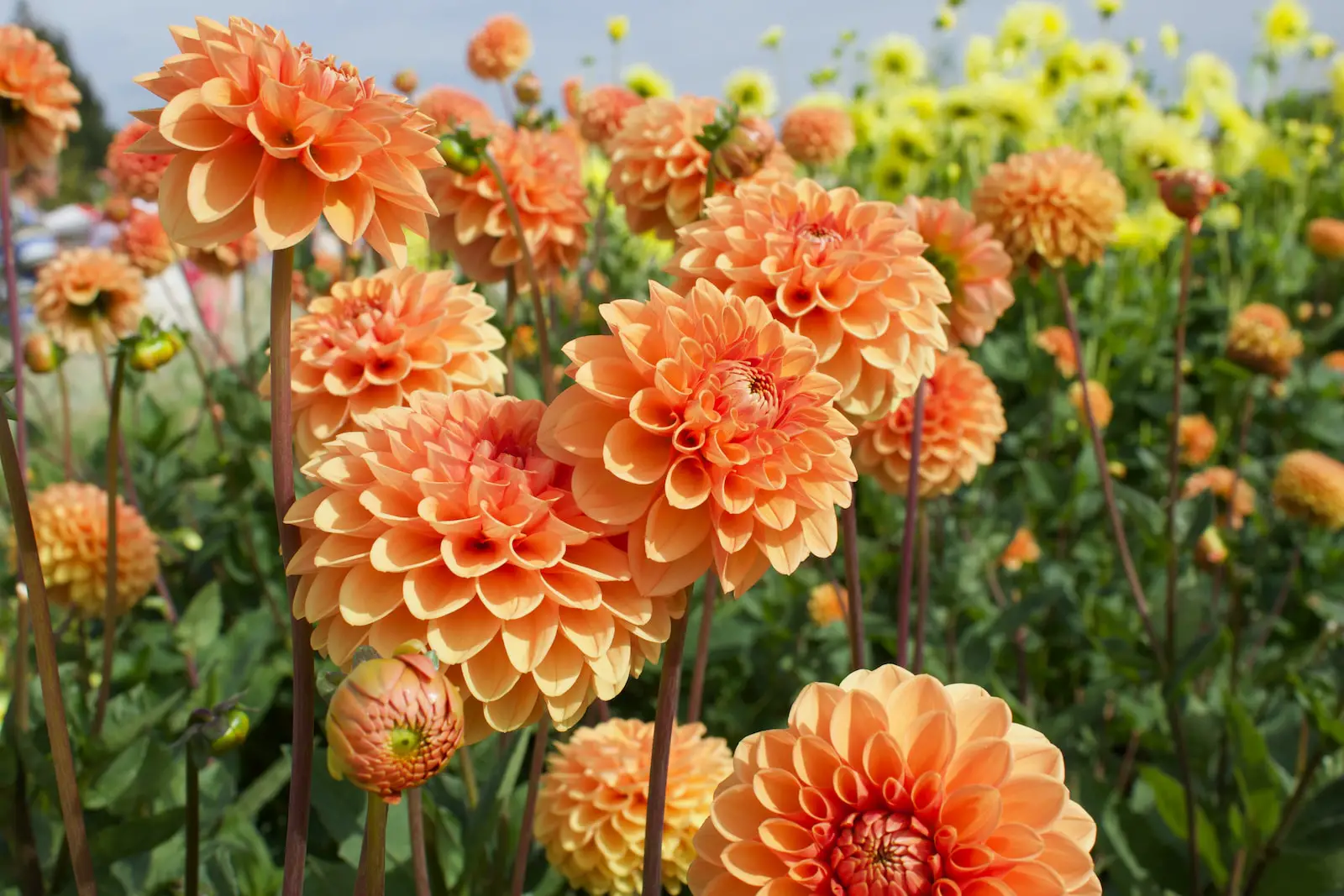Dahlia, a stunning genus of bushy, herbaceous perennial plants, is known for its vibrant, symmetrical flowers. Native to Mexico, Central America, and Colombia, Dahlia comprises around 42 species, each boasting a unique charm. With over 20,000 cultivars, this fascinating plant comes in various shapes and sizes, ranging from the small “mignon” type to dinner-plate-sized blossoms.
These colorful blooms appear in a myriad of colors except true blue, giving gardeners endless possibilities for landscape design. Dahlias have captivated gardeners and flower enthusiasts worldwide, becoming a popular choice for gardens, landscapes, and floral arrangements. They have even been declared the national flower of Mexico due to their captivating beauty and rich history.
Dahlias are more than just ornamental; they have cultural and historical significance. The Aztecs reportedly used Dahlias for food and medicinal purposes. Today, the plant symbolizes grace under pressure and is considered a mark of elegance and dignity. With proper care, Dahlias can be a remarkable addition to any garden.
| Attribute | Details |
|---|---|
| Common Names | Dahlia |
| Botanical Name | Dahlia pinnata |
| Family | Asteraceae |
| Plant Type | Perennial |
| Mature Size | 1-8 feet tall, depending on variety |
| Sun Exposure | Full sun |
| Soil Type | Well-drained, moderately fertile soil |
| Hardiness Zones | 7-10 |
| Native Area | Mexico, Central America, Colombia |
Dahlia Care
Caring for Dahlias is a rewarding endeavor, with the plants providing lush blooms from summer through the first frost in autumn. To grow healthy and vibrant Dahlias, proper attention must be paid to their specific needs including light, soil, and watering.
Planting tubers after the last frost and providing regular care ensures a summer filled with spectacular blossoms. Stake taller varieties to support growth, and keep an eye out for pests and diseases. Dahlias’ varied sizes and forms make them suitable for many garden styles, from borders to containers.
Light Requirement for Dahlia
Dahlias thrive in full sunlight and require at least 6-8 hours of direct sunlight daily. The intense light fuels their robust growth and helps produce vibrant, large blossoms. Planting in a sunny location ensures the best flowering performance.
Soil Requirements for Dahlia
Dahlias prefer well-drained, moderately fertile soil. Soil enriched with organic matter supports healthy growth. Avoid heavy clay or soggy soils, as they can cause tuber rot. A pH level of around 6.5 is considered ideal for Dahlias.
Water Requirements for Dahlia
Dahlias need regular watering, especially during dry spells. They prefer deep, infrequent watering to promote strong root growth. While the plants are growing, they require consistent moisture but be cautious to avoid waterlogging the soil.
Temperature and Humidity
Dahlias are sensitive to cold and should only be planted after the threat of frost has passed. They flourish in temperatures ranging from 60-70°F (15-24°C). Dahlia tubers can rot in overly wet soil, so proper drainage must be ensured, especially in humid regions.
Fertilizer
A balanced, low-nitrogen fertilizer applied every 3-4 weeks during the growing season supports Dahlia growth. Over-fertilizing, especially with high-nitrogen fertilizers, can lead to lush foliage but poor flowering.
Pruning Dahlia
Deadheading spent flowers encourages continuous blooming throughout the season. Some growers also pinch back young Dahlia plants to promote bushier growth and more blooms.
Propagating Dahlia
Dahlias can be propagated by dividing the tubers in early spring. Each division must contain at least one eye or bud. Dividing the tubers not only helps in propagation but also rejuvenates older plants.
How To Grow Dahlia From Seed
Growing Dahlias from seed is an economical way to enjoy these beautiful flowers. Sow seeds indoors 6-8 weeks before the last expected frost or directly in the garden after the danger of frost has passed.
Common Pests & Plant Diseases
Aphids
Aphids can be a problem for Dahlias, sucking sap and weakening the plant.
Powdery Mildew
This fungal disease can affect the leaves, particularly in humid conditions.
Common Problems With Dahlia
Leggy Plants
This problem may arise from insufficient sunlight or over-fertilization.
Tuber Rot
Caused by overly wet soil or planting in areas with poor drainage.
Pro Tips
- Plant tubers after the last frost for a summer of blooms.
- Provide support for taller varieties to prevent breakage.
- Practice proper watering techniques to avoid diseases like tuber rot.
- Deadhead regularly to encourage continuous blooming.
- Store tubers in a frost-free place if you live in a cold climate.




